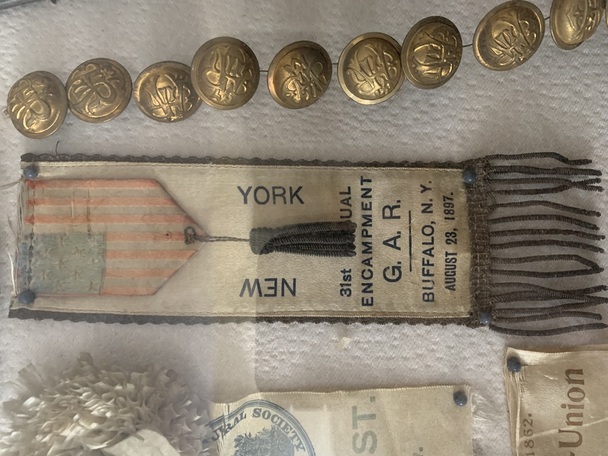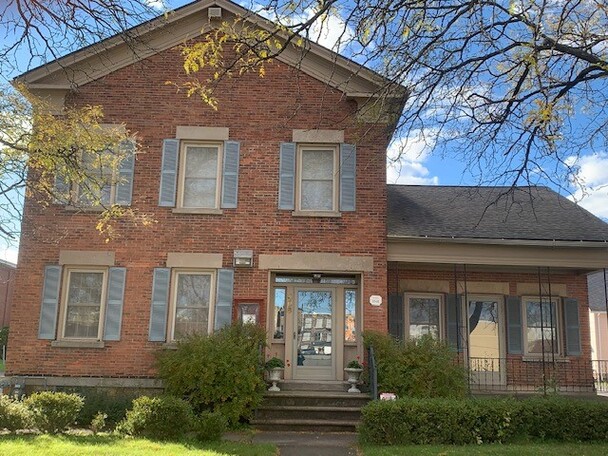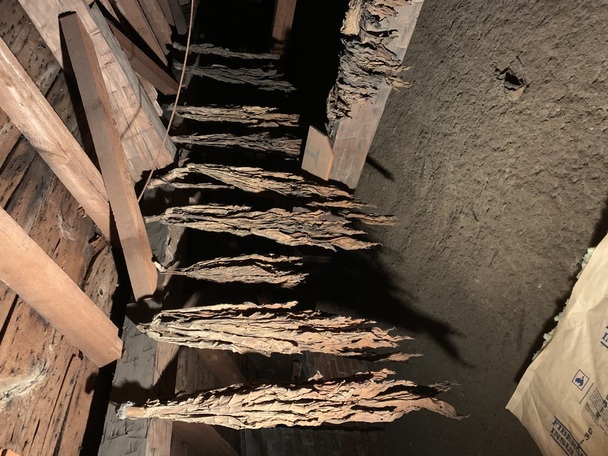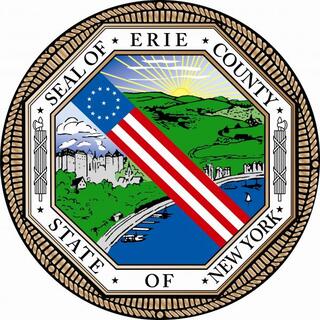Although affiliated with the Medina Historical Museum for well over 20 years, I am always delighted to discover something new that was hidden, tucked away or often just in plain sight but never really noticed before.
In the Summer issue of Western New York Heritage, Dennis Jewell’s article on the 1897 GAR Encampment held in Buffalo sent me scurrying down to the museum, as we are very fortunate to have in our collection many Grand Army of the Republic and other Civil War reunion ribbons and accoutrements that originally belonged to Captain Hezikiah Bowen, Jr. These were saved by his daughter, Helena Adelaide Howell, and donated by his great, great grandson, Roland C. Howell Jr.
In 1862, Captain Bowen formed Bowen’s Independent Rifles, later becoming Company A, 151st Regiment NYSV. Upon close scrutiny, sure enough, there was a ribbon from the 1897 Buffalo Encampment in the collection. What a thrill to be able to view that ribbon and associate it with the information provided in Dennis Jewell’s article. Like putting a face to a name.
A week later, a broken window in our museum’s attic sent me on a mission to repair it. Not easily accessible, the president and I, with the aid of an extension ladder, were able to enter the attic through a small ceiling hatchway. We were met with a flurry of blown-in insulation and air that had not been disturbed in decades. Upon gaining access I was very surprised to see a row of tobacco leaves that had been hung to dry, with others laid out on one of the crossbeams nearby.
At the start of the Civil War, the Union Navy set up blockades of Confederate harbors in an attempt to limit their ability to export commodities for financial gain. One of those affected commodities was tobacco. As a result, many northerners, not content to do without, began to grow their own tobacco.
Our museum home dates from 1841, when local businessman Levan Merritt built one of the first brick houses in Medina—one block west of Main Street, which was then the edge of civilization. Mr. Merritt, besides being a very astute businessman, is also credited with surveying and laying out the plots of Medina’s Boxwood Cemetery and planting the first shade trees in Medina.
As the original lot was quite a bit larger than today and included an orchard and gardens, it is quite possible that Mr. Merritt also grew his own tobacco. As Mr. Merritt died in 1886 and his widow in 1897, I would doubt that any of his daughters, who inherited the homestead, would have had any reason to enter the attic space to retrieve the tobacco, so we have a pretty good timeline for how long it might have been hanging there. In any event, it is now quite dry.
Needless to say, every trip down to museum is an adventure because YOU NEVER KNOW what you are going to find.











